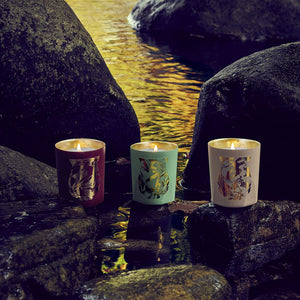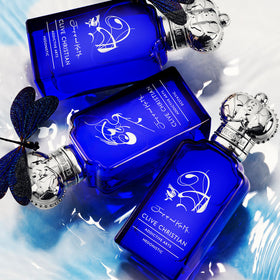
ROBERT PIGUET BANDIT 100ml
Eau de Parfum
Bandit was Robert Piguet's debut fragrance in 1944 and was the first chypre fragrance to incorporate smokey and leathery tones.
Notes
Top notes of galbanum and ylang-ylang.
Heart notes of leather and jasmine.
Base notes of patchouli, oak moss and vetiver.
Scent Type Dry Woods
History
In 1944, Robert Piguet created a daring couture collection, which was based on a “Bad Boy” concept. Just at the end of the second World War, Piguet’s shows featured models sporting villain masks and brandishing toy revolvers and swords. The scent accompanying this air of avant-garde mischief was Bandit, a composition created by perfume icon, Germaine Cellier, renowned for her bold and distinctive creations.
Bandit is a renowned classic. Cellier used dark notes of leather, the greenness of moss and smoky woods, to give the scent its rich and unforgettable character. Accented with verdant galbanum and hints of orange-blossom, Bandit is certainly the “enfant terrible” of the Piguet fragrance collection. Jasmine and patchouli lend an exotic twist while leather and oak moss provide a thorny crown.
Bandit is a fragrance composition light years ahead of its time — a perfumer’s perfume.
“Robert Piguet taught me the virtues of simplicity through which true elegance must come,” wrote Christian Dior who years earlier, was a penniless artist who would eventually become one of Piguet’s most celebrated “stagiares”. Other names that trained at The House of Piguet read like a Who’s Who of haute couture including Hubert de Givenchy, Marc Bohan, Pierre Balmain, and John Galanos.
But while Piguet’s impact on fashion is indisputable, it is his fragrance legacy that has made him legendary. Working with perfumer Germaine Cellier in the late ‘40s, it was Piguet’s Bandit and Fracas that acted as the watershed to a new era in perfumery. These were said to “have a particular feel very characteristic of his trademarks: Strict adherence to good taste, true luxury, a horror of the commonplace and an innate sense of seduction.”







